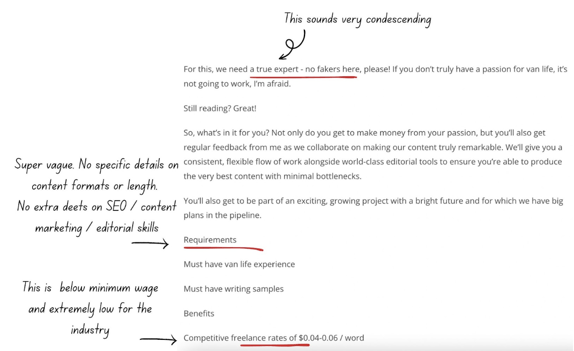How to vet freelancers in 6 effective steps

on August 22, 2023 • 8 minute read

The benefits of hiring freelancers are ample, but the process of hiring a freelancer isn’t always so straightforward.
Although freelancer marketplaces now count in the dozens, they don’t always make the freelancer hiring process easier. A single freelance job post can attract over a hundred applicants and a pile of proposals (of varying quality). This alone can make talent vetting a vexing process.
And when you finally find a good match, the whole deal can still get blown if your company’s accounting or payroll systems aren’t up to the task. In fact, only 20% of companies don’t experience any challenges with paying international workers, according to a Pymnts survey. For the majority, (47%) tax management hinders their ability to pay international workers, followed by regulatory compliance (19%).
Soundly, you can avoid the above frustrations by building an effective process for vetting freelancers — and this post teaches you how to create one 😉
Get matched with pre-vetted freelancers: Xolo helps you hire, manage and pay a global external workforce. |
How to vet freelancers in 6 steps
Assuming you know where to find the best freelancers, here’s a six-step process for ensuring they’re a match for your project.
1. Create a well-defined role and project description
Too many managers go into the field without a proper role and project description. Big mistake. Without a short list of skills and competencies your ideal freelancer should have, you’ll end up overwhelmed with choices.
Likewise, a broad-stroke project description means that you’ll likely attract subpar applications from beginner freelancers looking for an immediate gig, or a vast discrepancy in project quotes.
To make the freelancer hiring process easier for both sides, create two assets:
- Role description. Make a list of must-have skills and qualifications for your ideal hire. For example: “An email marketer, familiar with A/B testing and ConvertKit. Strong portfolio of cart abandonment and upsell emails. Past experience with DTC cosmetics brands is preferable.” Keep the number of desired competencies at under 5 items. List the rest as nice-to-haves to avoid alienating some candidates.
- Project description. Write down all tasks or deliverables you want to receive. State the project timeline or weekly time commitment (e.g., a three months campaign / 10 hours per week). Mention a compensation range, based on the going industry rates.
The main thing to remember about hiring freelancers is that vetting goes both ways. Experienced independents will pre-qualify all incoming leads and move forward only with projects they like. After all, no one wants to deal with a nightmare client.
So it’s as crucial for you to sell your project as it is for them to sell their expertise. Be candid about your expectations, goals and budget to attract the best fits.
🟥 Bad freelance job post example

🟩 Great freelance job post example

2. Create a freelancer pre-qualification questionnaire
You’ve got a solid idea of whom you need on board. Now you need to vet freelancers against your requirements.
Instead of asking for a resume (which probably won’t tell you much), ask each freelancer to complete a quick application questionnaire. With a standardized form, you can collect all the necessary deets about your hire and weed out not-so-motivated or qualified candidates.
An intake form also helps you build up your freelance talent database that you can refer to any time you’re looking to scale your team.
How to create a time-saving intake form for hiring freelancers:
- Ask for essential information first: contact details, personal website or portfolio current availability.
- Collect compliance data, such as accepted payment methods, operating location, registration status and tax details.
- Validate your candidate requirements. Add screening questions, based on your role description (i.e., do you have experience with [your niche]?).
- Add several open-ended questions to collect extra insights about the freelancer’s work process, training and professional background.
Add pre-suggested answers to get more standardized replies (e.g., select all the applicable skills from the list below). Keep a reasonable number of intake fields, ideally under ten in total.
Save this template as an online form and send it over to every potential freelancer you’re considering.
🟩 Green flag: The freelancer completed the questionnaire within the specified timeframe. Their answers give you a good picture of their professional background, service lines and areas of expertise.
🟥 Red flag: The freelancer drops off at this stage without any explanations or provides generic answers to open-ended questions (which sound suspiciously like ChatGPT).
Sample questions to include in a freelancer pre-qualification form
General
- How many years of industry experience do you have?
- And how many of these are freelance?
- What are your biggest professional bragging rights?
- How much work can you do per month?
- What are your ballpark rates for [specific task]?
- Where can we see your work?
- How soon can you start?
- What’s your employment status?
- Are you incorporated as a company?
- What payment methods do you accept?
Specific
- Do you have experience with specific [apps or technologies]?
- Have you previously worked with [your industry]?
- What is your training in [specific skill]?
- On a scale of 1-10, rate your ability to [deliver a specific outcome]?
- How would you define [an important element of your project]?
3. Run a compliance check
The next step is less sexy but equally important: ensure you won't get into any legal trouble by working with the selected freelancer(s).
At a minimum, you should vet freelancers by:
- Operating location to avoid working with sanctioned countries or territories. Not only will payment processing be difficult, but you’ll also carry reputational risks.
- Registration status. Your hires should have a valid tax number and self-employment or incorporated status.
- Supported payment methods or preferred currencies to ensure you can pay them without any issues.
Check in with your HR team regarding any requirements or restrictions for hiring an external workforce. Your corporate policy may prioritize working with incorporated freelancers to minimize liability risks or those with a valid VAT number. Likewise, there may be constraints about accepted payment methods or currencies for billing. It’s best to know these details before you’ve already had a verbal agreement with an amazing prospect, whom you now need to disqualify.
You should consider asking the team to send over any employment paperwork, such as a fresh copy of the independent contractor agreement, a non-disclosure agreement (NDA), a statement of work (SOW) document, etc.
🟩 Green flag: The freelancer provides all the requested information and documents in a timely manner. They proactively ask for a work contract and request necessary tax details from you.
🟥 Red flag: The freelancer point-blank refuses to provide an ID copy or any details on their operating status. They encourage you to do the job “off-the-books” and pay them through PayPal or another P2P payment service.
If you don’t want to jump through multiple admin hoops, hire Europe’s best freelance talent with Xolo 🚀 Brief us on your project and we’ll get back to you in 72 hours tops with pre-vetted candidates from our 130K+ strong community. With our built-in freelance management system, payment, accounting and admin tools you can run global freelance teams without worrying about compliance risks.
4. Test for compatibility during a discovery call
Client discovery calls are a great opportunity for clients to pre-screen prospects and for freelancers to better understand your needs.
❌ That said, a client discovery call isn’t:
- A job interview, where you ask the freelancer to briefly recite their entire career history in 10 minutes or answer cookie-cutter questions like “Where do you see yourself in 5 years?”.
- A free consultation, where you’ll expect the freelancer to dazzle you with a free marketing strategy, do some on-the-fly app coding or complete another task, for which they typically get paid.
Think of discovery calls as a networking date: Both sides get to do the introductions, pose questions and talk collaboration. As a client, be ready to introduce your company, describe your project and answer questions about your operating flows.
To have a productive evaluation call with a freelancer, share the following details ahead of time:
- Company introduction
- Needs or goals
- Estimated timeline
- Expectations
- Time commitment
- Budget (if you have a fixed sum in mind)
Spend the first 10 minutes introducing your company and the project. You should clearly explain why you’re looking for a freelancer, what you’ll want them to accomplish and how you expect the collaboration to go. If you have any special requirements (e.g., be available for weekly team meetings at 10 am), share these too.
Then pass the mic to your freelancer. A good idea is to start with an ice-breaking question like “What brought you to freelance [x]? or “How did you get interested in [your field]?” and see how the conversation flows from there.
Your goal is to not necessarily probe your freelancer’s hard skill-sets (although you can ask some questions too). A good portfolio should tell you a solid story. Instead, focus on learning more about their personality, motivation and management preferences.
🟩 Green flags: The best freelancers take pride in offering exceptional customer experiences. They’ll be in charge of the conversation, proactively explaining where and how they can add value, asking thoughtful questions about your work process and explaining what you can do to set them up for success.
🟥Red flags: The freelancer is completely at a loss for words during the interview. They are reluctant to talk about their past projects, don’t really engage in the discussion and may look distracted.
Sample questions to ask a freelancer before hiring them
- Can you walk me through your standard services delivery process?
- How do you usually onboard new clients? What do you need to get started?
- I really liked [specific portfolio item]. Can you please tell me a bit more about it?
- What would you do if you realize that you cannot meet the original deadline?
- What can I give you to make this job easier and give it the greatest possible chance of success?
- How do you handle scope creep? What do you do to prevent it?
5. Check testimonials
The freelance economy thrives on word-of-mouth so, of course, the best freelancers have a hefty selection of public testimonials. If you’re still undecided, reach out to their past clients and ask about their experience of working together.
Alternatively, you can ask the freelancer to provide one or two client references. Most will do so in a heartbeat.
🟩 Green flag: The freelancer has public testimonials on their website or recommendations on their LinkedIn profile. They’re open to connecting you with their past or current clients.
🟥 Red flag: The freelancer will come up with excuses for not connecting you with their past clients. Worse, you reached out to a person listed as their past client, but they have never worked with a shortlisted freelancer.
6. Do a test project
While anyone can talk a good game, only experts can deliver on their promises. Check if the shortlisted freelancer is as good as their marketing makes them sound by offering to do a paid test assignment together.
💡 Pro tip: The fastest way to spook a perfect freelance candidate is by asking them to do any sort of free work.
You don’t ask for a free bangs haircut at a salon “to test their skills” or offer a plumber to check your leaking pipe in exchange for a “positive shoutout on Twitter”. Yet, 89% of freelance graphic designers get routinely asked to work for free 🤷♀️
A good test assignment for vetting a freelancer should take around an hour of their time, include clear instructions (just as a regular task would) and come with a reasonable deadline.
For example, you can ask to:
- Write a short copy
- Design a simple graphic asset
- Conduct a trial lesson
Evaluate the completed test project using criteria such as:
- Adherence to instructions/requirements
- Communication
- Delivery (on time or ahead of the deadline)
- Quality (use objective metrics)
- Overall vibe (was it easy and pleasant to work with this person)
Satisfied with the test project outcome? Get them onboard at full capacity.
🟩 Green flags: You’ve got the assignment on time and the output matches most of your expectations. The freelancer kept you updated on their progress, asked the right questions and positively took in the feedback.
🟥 Red flags: The test assignment was delayed (without any prior comms). Some of the provided instructions were ignored. The quality of the work is mediocre, yet the freelancer wasn’t too keen on incorporating your suggestions or handling editing requests.
To conclude
To build an effective relationship with freelancers, you need to effectively communicate your expectations to any new hire.
If you can’t pin down your requirements or articulate your preferences beyond the basics of “this is good” and “and I don’t like this,” you’ll continuously struggle with freelancer retention and management.
Build out repeatable processes for onboarding, briefing and managing new freelancers. And if you want to reduce this learning curve, try the Xolo hiring service. You’ll get both the talent and the tools to complete your projects effectively.
About Elena
Elena Prokopets writes content for tech-led companies & software development businesses, marketing to them. Her empathy for the customer, expertise in SEO, and knack for storytelling help create content that ranks well and drives industry conversations.
Elena uses Xolo so she can focus on her solo B2B content writing business without stressing over the compliance and admin overhead.
Related blogs
Subscribe to
our newsletter
and get the latest updates and expert
business tips straight to your inbox.

